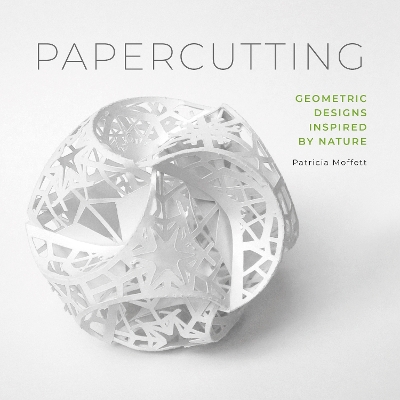Reviewed by annieb123 on
Papercutting is a tutorial and theory guide to paper sculpture by Patricia Moffett. Due out 28th Sept 2019 from Schiffer publishing, it's 128 pages and is available in paperback (and possibly hardcover, it's not clear from the publishing info).
The inspirations for the pieces which are included in this volume come from nature. There are birds, insects, trees, and natural landscape features among the projects. The forms are fluid and dynamic. The detail on some of them is stunning. All are gorgeous. Even the most intricate pieces are built up of simple units into a deceptively complex whole.
The introductory chapters (~13% of the page content) cover tools, materials, Fibonacci sequences, cuts, folds, transferring patterns, scoring, using templates and more.
The following chapters contain the tutorials and are generally progressively more complex. There are really good general discussions of axes of symmetry and the subchapter on tesselations was concise and easy to understand.
I was so impressed with the inclusion of a really good discussion of the mathematics and symmetry of nature in the form of whorls on flowers, insects, fruits, shells, the growth pattern of trees and more. This is a layman accessible book, but it really adds to the depth and detail of the sculptures to know some theory behind the forms.
This would make a very good book for crafters as well as a wonderful resource book in a classroom art setting for middle-grades+ to tie-in with coordinating math lessons. It would be a good addition to the homeschooling library as well.
Five stars. Really lovely book.
Disclosure: I received an ARC at no cost from the author/publisher for review purposes.
Reading updates
- Started reading
- Finished reading
- 25 August, 2019: Reviewed
